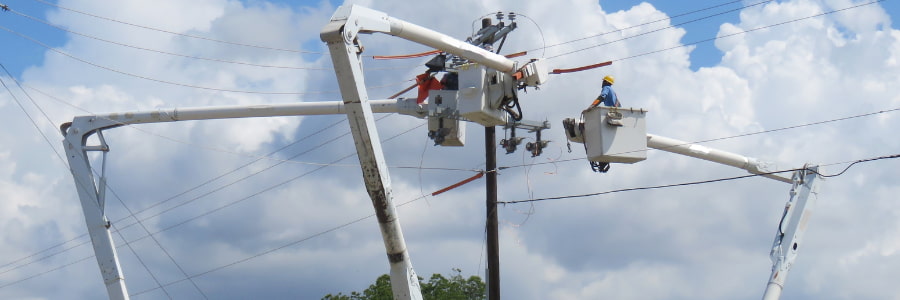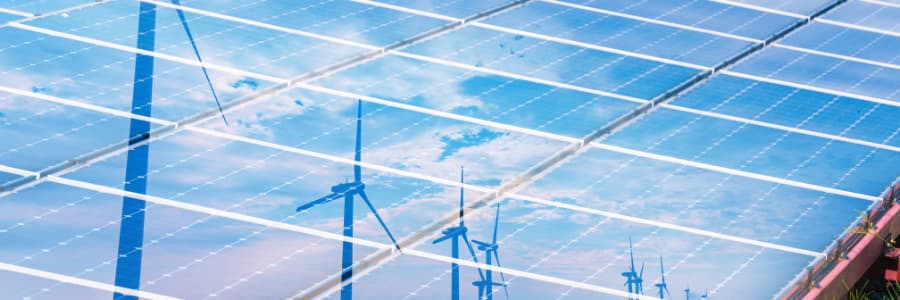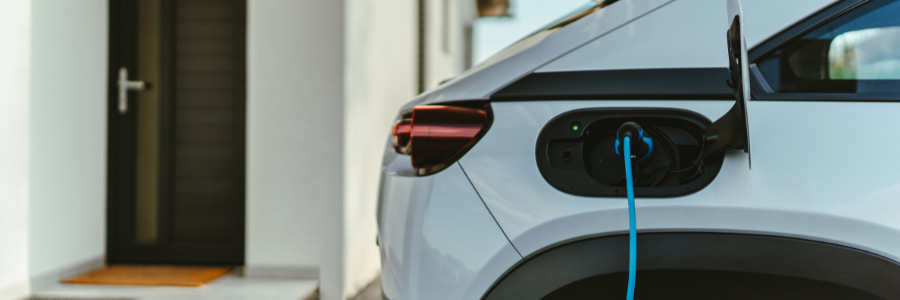Microgrids are a growing phenomenon that changes the way we think about and manage energy.
Globally, there are in excess of 4,500 microgrids.
In the U.S. alone, there are 692 microgrids, with the market set to grow explosively – in part due to the rise of renewables and electric vehicles (EVs).
The facts above might have raised a few questions. For example, what are they? Why are they so popular? And what is their connection to EVs?
Find answers to those and other questions in our overview article.
A microgrid is like a small power system that can work independently or together with a big power grid. Microgrids are most often used to power remote areas or places with no outside grid connection. A growing use case is people or companies wanting to take advantage of microgrids’ many advantages, including where EVs are concerned.
The microgrid is a combination of local power production and storage that serves a specific area. The area can be a neighbourhood, a group of buildings, a company, or in some cases even a single house.
Microgrids are typically set up to run by themselves (off-grid) or alongside the main power grid (on-grid).
The image below gives a rough illustration of what a microgrid can look like.
Microgrids work like mini power stations or power utilities. They produce energy from different sources, such as solar panels, windmills or gas engines. The energy is either used immediately or stored in things like batteries. There is also the grid infrastructure (the wiring) that connects these units, as well as the microgrid users.
The microgrid is controlled by a Power Management System (PMS). This is the central platform that checks how much energy is produced and how much is needed at any given time.
The PMS system uses energy storage systems like batteries and electric car batteries, or import of power from the main grid, to keep energy use and supply in balance.
As mentioned, microgrids can hook up to the main power grid, either all the time or just sometimes.
When they do, they follow specific rules and help the main grid stay steady, especially when there’s a drop or spike in energy. In this way, they help locally and on a bigger scale.
Microgrids offer a wide range of potential advantages. In bullet points, some of the main benefits are:

Off-grid microgrids are not connected to any other energy grids. All power production and use happen within the off-grid microgrid. They are often used in remote areas or situations where it is unfeasible to connect to a primary electrical grid. Another core scenario is for islands. Off-grid microgrids are also becoming a popular way to increase power resilience and independence for communities.
In contrast, on-grid microgrids are connected to the general grid. Power can flow back and forth between the two. Depending on the circumstances, an on-grid microgrid can buy extra energy from the main grid. It can also sell excess energy production to the main grid, providing a source of revenue for the owners.

In some ways, your home can be considered a type of microgrid. This would require having an energy source (for example, solar panels) and perhaps a way to store energy production.
A house is different from a community microgrid in terms of complexity. However, that does not mean it does not make sense to focus on ways you can optimise energy use. One example is to make sure you use as much of your energy production as possible. One way of doing this is by charging your EV when you are producing more energy than you are otherwise using.
For both individuals and areas, microgrids help give energy customers more say in the energy world. Instead of just using energy, individuals and groups can produce it and decide what to do with it. These people are part of the “prosumers” group, which we think will have a big influence on the future of energy.

Apart from the previously mentioned benefits, many areas have a need for microgrids. Areas with no or few connections to an outside grid, such as islands, are one example. In the EU area alone, there are about 2400 inhabited islands. Many are working on increasing local energy, renewable energy production, but this will often require microgrids to work optimally. Microgrids are also becoming increasingly important in regions seeing increased electrification and areas suffering from extreme weather.
When storms or power outages shut down the primary electricity grid in an area, many homes, businesses, and critical services can be affected. This is because traditional electricity grids can cover whole countries or continents.
Microgrids can switch away from the main grid and continue to provide power during emergencies like these. This process is known as ‘islanding’.
At the same time, the existing grid is coming under intense pressure as our electricity usage is growing. In such situations, microgrids are an excellent way to help minimise pressure and create a more efficient use of resources.

EVs present both challenges and opportunities for microgrids – and vice versa.
Microgrids can be a way to provide more stable EV charging and limit stress on the overall grid.
However, microgrids are by nature smaller, and if many EVs charge simultaneously, it can put a lot of pressure on available resources. With that in mind, microgrids can benefit hugely from intelligent charging solutions that can delay charging in cases with a lot of demand and shift their energy consumption to hours when the energy costs are lower.
This not only eases the strain on the main power grid but also ensures that the growth of the EV market is supported by a green and sustainable energy infrastructure.

Fleets of EVs can greatly impact energy needs in a specific area, depending on fleet size and composition. Charging EV fleets can require a lot of power and, in some cases, building out grid infrastructure, which is costly.
Instead, EV fleet managers can consider microgrids to cut costs and improve charging options. In an example from the U.S., a fleet manager constructed a 5.6 MW microgrid with distributed energy generation and energy storage for a fleet of buses. Apart from lower costs, the project is expected to reduce lifetime emissions by 62%, equivalent to the reduction of 155,000 tons of greenhouse gases.